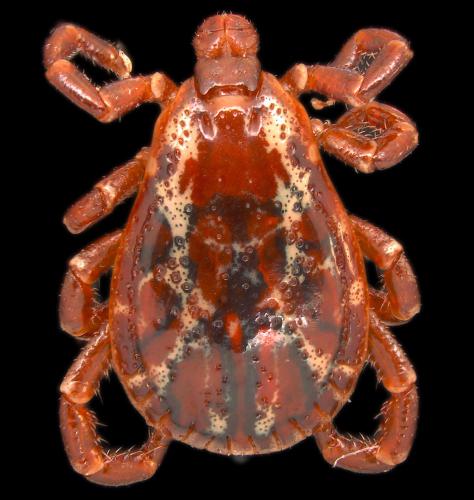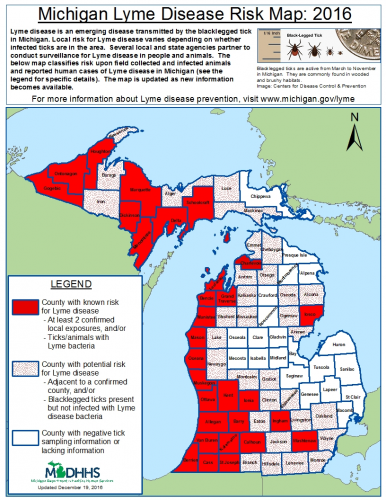Dog tick season is upon us
American dog ticks are the most commonly found tick in Michigan and are out right now.

The American dog tick, Dermacentor variabilis (Acari: Ixodidae), is the most commonly found tick in Michigan and can be distinguished from deer ticks by the presence of white markings on the back. Dog ticks do not transmit Lyme disease. Their bites rarely result in serious disease in Michigan, but like other wood ticks, dog ticks are a known carriers of Rocky Mountain spotted fever and tularemia.
Rocky Mountain spotted fever reports in Michigan are rare, with only 17 cases reported from 2009 to 2013. These cases have been from primarily southern counties. Also, toxins injected with their bites cause itching, fever and in some cases tick paralysis. Be on the alert for any rash, fever, nausea or muscle ache that develops after any tick bite, as these can be primary symptoms of a number of tick borne diseases. Keep in mind that ticks cannot feed immediately after attaching. They require several hours to imbed their mouthparts deep enough to take a bloodmeal.
Mice appear to be the preferred hosts of immature stages of the American dog tick while the adults prefer to feed on dogs and other large mammals. Dog ticks can live for over a year without food. These ticks are most likely to be encountered in spring and early summer along animal paths in grassy, shrubby areas adjacent to woodlots and forests. Family members and pets should be inspected daily where ticks are common.
Insect repellents that contain DEET may help keep wood ticks from biting. Tick repellents containing permethrin are meant to be applied to clothing (and not to skin). They are very effective in keeping ticks off and are very long lasting. Tucking your pant cuffs into your boots will keep ticks from getting beneath your jeans and crawling up your legs. If an attached tick is found, it should be removed by placing tweezers near the head and gently pulling it off. Be careful not to squeeze the tick.

Male dog tick Photo by Susan Ellis, USDA APHIS PPQ, Bugwood.org

Michigan Lyme Disease Risk Map: 2016.



 Print
Print Email
Email


